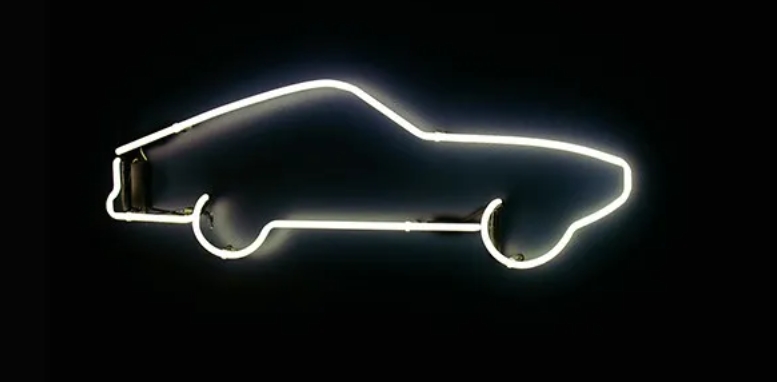
汽车行业已经开始进行电气革命,英国政府宣布到2030年将会禁止销售新的柴油和汽油轿车及货车,这使英国成为了汽车脱碳最快的G7国家。在全球范围内,电动汽车(EV)的数量预计将从2015年的约100万增加到2040年的3亿。但是,要实现这些目标,需要低成本的电池来大幅提高电动汽车的使用性能。
The electric revolution is already well underway in the car industry, with the UK Government announcing plans to ban the sale of new diesel and petrol cars and vans by 2030, putting the UK on course to be the fastest G7 country to decarbonise these vehicles. Globally, the number of electric vehicles (EVs) is projected to rise from about 1 million in 2015 to 300 million in 2040. Achieving these goals however, requires low-cost batteries with dramatically improved performance for EV use.
现在,剑桥研究人员Simone Hochgreb教授,Adam Boies博士和MichaëlDe Volder教授将与伦敦大学学院的Kai Luo教授一起,研究用于锂离子电池(LIB)的电极(尤其是阴极(正极))增强材料的实验和数值工具以及生产技术。这些开发是为了满足下一代电动汽车和储能系统的功率密度和成本要求。
Now Cambridge researchers Professor Simone Hochgreb, Dr Adam Boies and Professor Michaël De Volder will work alongside Professor Kai Luo, from University College London, on experimental and numerical tools as well as production techniques for enhanced materials for electrodes, especially the cathode (positive electrode), used in lithium-ion batteries (LIBs). These developments are required to meet the power density and cost requirements for the next-generation EVs and energy storage systems.
这项由英国工程和自然科学研究委员会资助的研究将结合用于LIB的高性能阴极材料。这些材料将基于层状,多元素金属氧化物(MOs)和碳金属氧化物(CMOs),具有高速连续批量生产的内在潜力。其主要研究领域将集中在具有多种金属成分和表面特征的镍锰钴氧化物(NMC)上,由于NMC电池可承受的充放电循环次数较多,因此受到主流汽车公司的青睐。但是,所探索的研究和生产技术(包括火焰喷雾热解(FSP))也将适用于大量MOs和CMOs。
The research, funded by the EPSRC, will combine high-performance cathode materials for LIBs. These materials will be based on layered, multi-element metal oxides (MOs) and carbon-metal oxides (CMOs), with inherent potential for high-speed continuous processing for mass production. The main area of research will focus on nickel manganese cobalt oxides (NMCs) with various metal contents and surface features, which are favoured by mainstream automotive companies due to the high number of charge and discharge cycles the NMC battery can withstand. However, the research and production techniques explored – including flame spray pyrolysis (FSP) – will be applicable for a large class of MOs and CMOs.
FSP是一种前景可期的制备方法,用于生产大量粉末状(纳米粒子)形式的功能材料。其是一种有效且可扩展的工业过程,易于处理,并且可以保持出色的产品质量。Hochgreb教授将致力于火焰合成;Boies博士研究纳米粒子的合成;De Volder教授研究纳米材料和电池;Luo教授研究建模和仿真。他们的工作将直接与电池性能指标挂钩, 并与四家公司合作,:当代安培科技有限公司(CATL),剑桥大学的孵化公司Echion Technologies,TFP氢类产品公司(前身为PV3 科技公司)和上海唐丰能源技术(STFET)。
FSP is a promising method used to produce a wide variety of functional materials in the form of powders (nanoparticles) and in large quantities. It is an effective and scalable industrial process that is easy to handle and one that maintains excellent product quality. Professor Hochgreb will work on flame synthesis; Dr Boies on nanoparticle synthesis; Professor De Volder on nanomaterial and batteries; and Professor Luo on modelling and simulation. Their work will be directly linked to battery performance metrics, in collaboration with four companies: Contemporary Amperex Technology Co. Limited (CATL), University of Cambridge spin-out Echion Technologies, TFP Hydrogen Products (formerly PV3 Technologies), and Shanghai Tang Feng Energy Technology (STFET).
Simone Hochgreb教授表示:“要利用多种能源并减少二氧化碳排放,遏制城市空气污染,那么运输行业的电气化就会是一个自然而然的过程,因此电动汽车的长期前景是强劲的。
Professor Simone Hochgreb said: “The long-term outlook for electric vehicles (EVs) is strong, with the electrification of the transport sector considered a natural development in order to make use of energy from a wide variety of sources, and to reduce CO2 emissions and combat urban air pollution.
“向电动汽车过渡时,我们面临的最大障碍之一是充电基础设施本身,所以我们需要研究如何确保满足下一代电动汽车和储能系统的功率密度和成本要求。
“One of the biggest obstacles facing us in making the transition to EVs is the charging infrastructure itself, which is why research is needed to ensure that the power density and cost requirements for next-generation EVs and energy storage systems are met.
“我们使用火焰喷射热解技术制造锂离子电池的技术是一步一步的连续过程,具有大规模生产低成本设计材料的潜力。”
“Our manufacturing technique for lithium-ion batteries using flame spray pyrolysis is a one-step continuous process with the potential to produce designer materials at scale and low cost.”